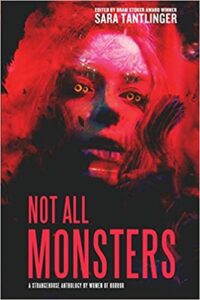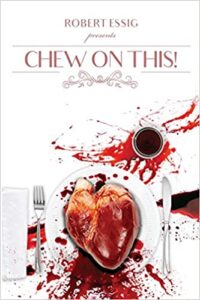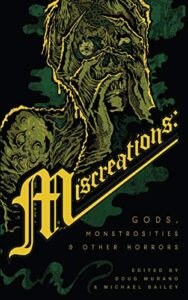Not All Monsters: A Strangehouse Anthology of Women in Horror edited by Sara Tantlinger
Rooster Republic Press, 2020
ISBN-13: 9781946335319
Available: Paperback ( Bookshop.org )
Not All Monsters, a new anthology of horror fiction edited by Bram Stoker Award-winning author Sara Tantlinger, contains twenty-one tales of terror and darkness by women authors. Tantlinger had the privilege and challenge of scouring hundreds of entries for the anthology. Her introduction provides an overview of why she decided to embark on this project, and it is well worth the read.
I loved all the stories in this anthology, although some tales stood out more than others. In “Portrait of a Girl in Red and Yellow” by Joanna Roye, set in the Victorian era, the narrator discovers a hereditary skin condition that turns out to reveal a family secret has been passed on to her. “The Miraculous Ones” by G.G. Silverman tells the story of conjoined twins developing their own personalities and the deep desire to live different lives. In “Black Feathered Phlogiston” by K. P. Kulski, sisters tend to a flock of harpies that live in their attic. As their bodies grow, so do their appetites, and the new woman in their father’s life knows more about the creatures than the girls think she does. “Leather”, a particularly delicious tale by S. M. Ketcham, reveals what can happen to an incel when he takes things too far. “Pretty Little Vampires” by Sam Fleming tells a dark tale about a woman who wants to attract fairies to her dwelling, but gets more than she bargains for. Joanna Koch’s “The Revenge of Madeline Usher” is wonderful, and keeps with the tone of Poe’s original “The Fall of the House of Usher.” This reimagining of the story of the Usher twins told from the perspective of Madeline gives the original story more grotesque content, a deeper story about what goes on in the House of Usher, and what happens, or could happen, when the house finally falls. Could Madeline finally be free of the house and her brother? It is a brilliant short story.
I would recommend this volume to libraries or individuals who want to expand their collections of women-led horror projects. This is a great book, and I couldn’t put it down once I started reading. Each story has its own unique feel. I look forward to reading more by the contributors! Highly recommended.
Reviewed by Lizzy Walker
Editor’s note: Not All Monsters: A Strangehouse Anthology of Women in Horror is a nominee on the final ballot for this year’s Bram Stoker Awards in the category of Superior Achievement in an Anthology.







Follow Us!